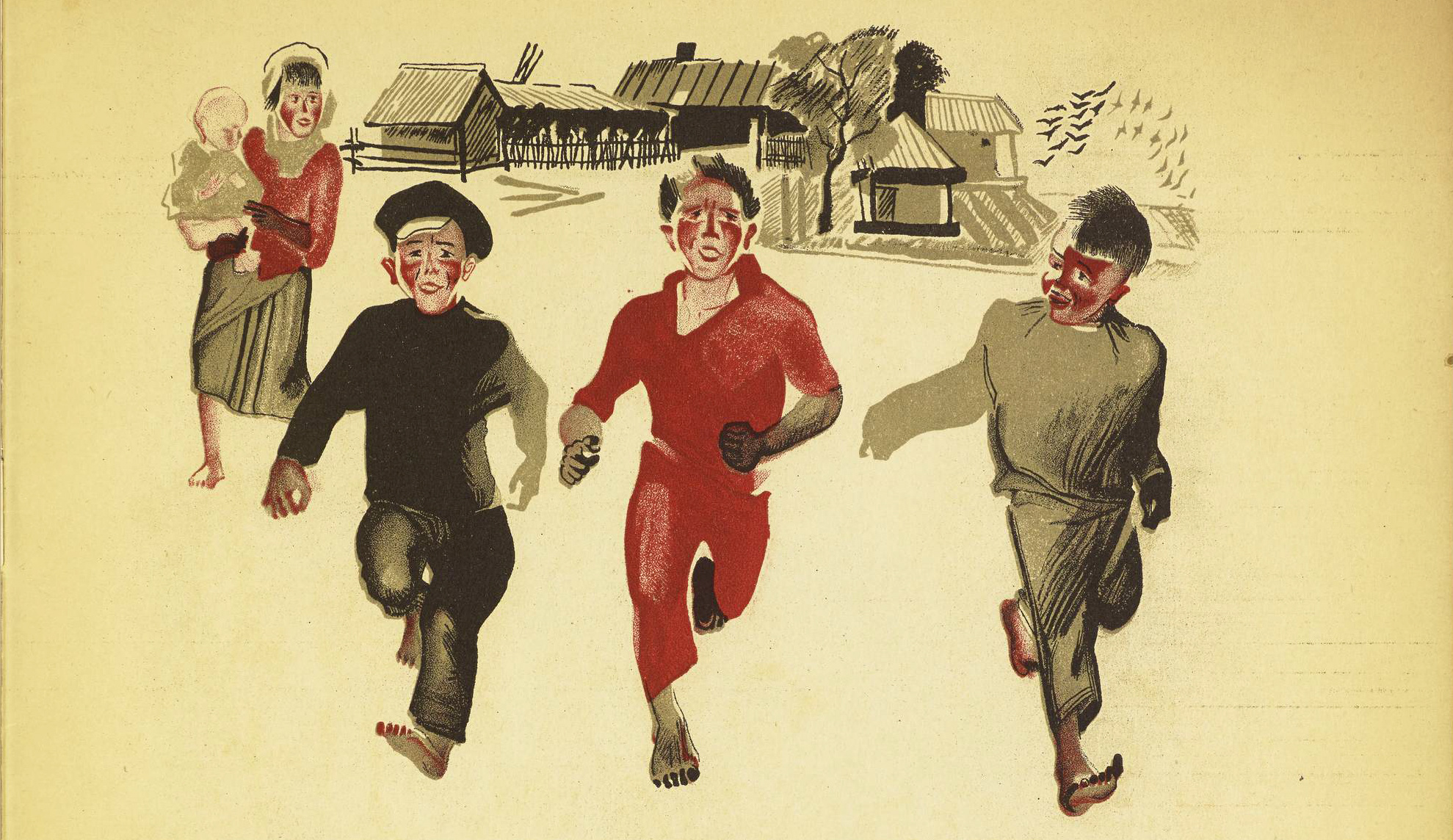Iskorka (Little spark) w as a monthly color-illustrated supplement to the newspaper Rabochaia Moskva aimed at small children, published from 1926 to 1931. The journal consisted primarily of stories and poems, and, from early on in its run, was most often illustrated by artists associated with the Obshchestvo stankovistov (OST), including Aleksandr Deineka, Ekaterina Zernova, and Klavdiia Kozlova. The visual nature of the medium is therefore an unusually accomplished and professional form of modernist, relatively shorthand drawing that is figurative but not naturalistic. Some of the content, both verbal and visual, is openly didactic in its promotion of socialist ideals and the novyi byt, but much of it is more circumspect in its political message or even seemingly apolitical, focusing on animals, nature, adventure and other standard children’s themes. In the early years of the journal, for example, semi-ethnographic drawings of Africa as a distant land of naked, coal-black children playing with jungle animals were presumably meant to educate Soviet children about other cultures that exist in a timeless elsewhere – although sometimes Soviet airplanes, as harbingers of socialist modernity, fly into these exotic locales.
as a monthly color-illustrated supplement to the newspaper Rabochaia Moskva aimed at small children, published from 1926 to 1931. The journal consisted primarily of stories and poems, and, from early on in its run, was most often illustrated by artists associated with the Obshchestvo stankovistov (OST), including Aleksandr Deineka, Ekaterina Zernova, and Klavdiia Kozlova. The visual nature of the medium is therefore an unusually accomplished and professional form of modernist, relatively shorthand drawing that is figurative but not naturalistic. Some of the content, both verbal and visual, is openly didactic in its promotion of socialist ideals and the novyi byt, but much of it is more circumspect in its political message or even seemingly apolitical, focusing on animals, nature, adventure and other standard children’s themes. In the early years of the journal, for example, semi-ethnographic drawings of Africa as a distant land of naked, coal-black children playing with jungle animals were presumably meant to educate Soviet children about other cultures that exist in a timeless elsewhere – although sometimes Soviet airplanes, as harbingers of socialist modernity, fly into these exotic locales.
Later, however, the images of native children in the rustling African jungle are replaced by more sober and contemporary images of African American children oppressed by racism in capitalist America, including, in 1931, illustrations for a translated story by Langston Hughes, “Tol’ko dlia belykh.” This shift in the way the body of the black racial other is represented responds to the solidification during this period of the Comintern’s rhetoric of racial enlightenment as constitutive of communist superiority over capitalism, particularly its choice, starting in 1928, to focus its activities on racism in the United States. The journal thus traces, within a short span of years, artists’ self-conscious transformation of the very morphology of the representation of blackness in Soviet Russia. The outmoded images of a primitive Africa that children in colonialist Europe (and Imperial Russia) were raised on, and which continued at least a decade into the Soviet era, became less ideologically useful than images of African American children for teaching Soviet children about the superiority of socialism.
